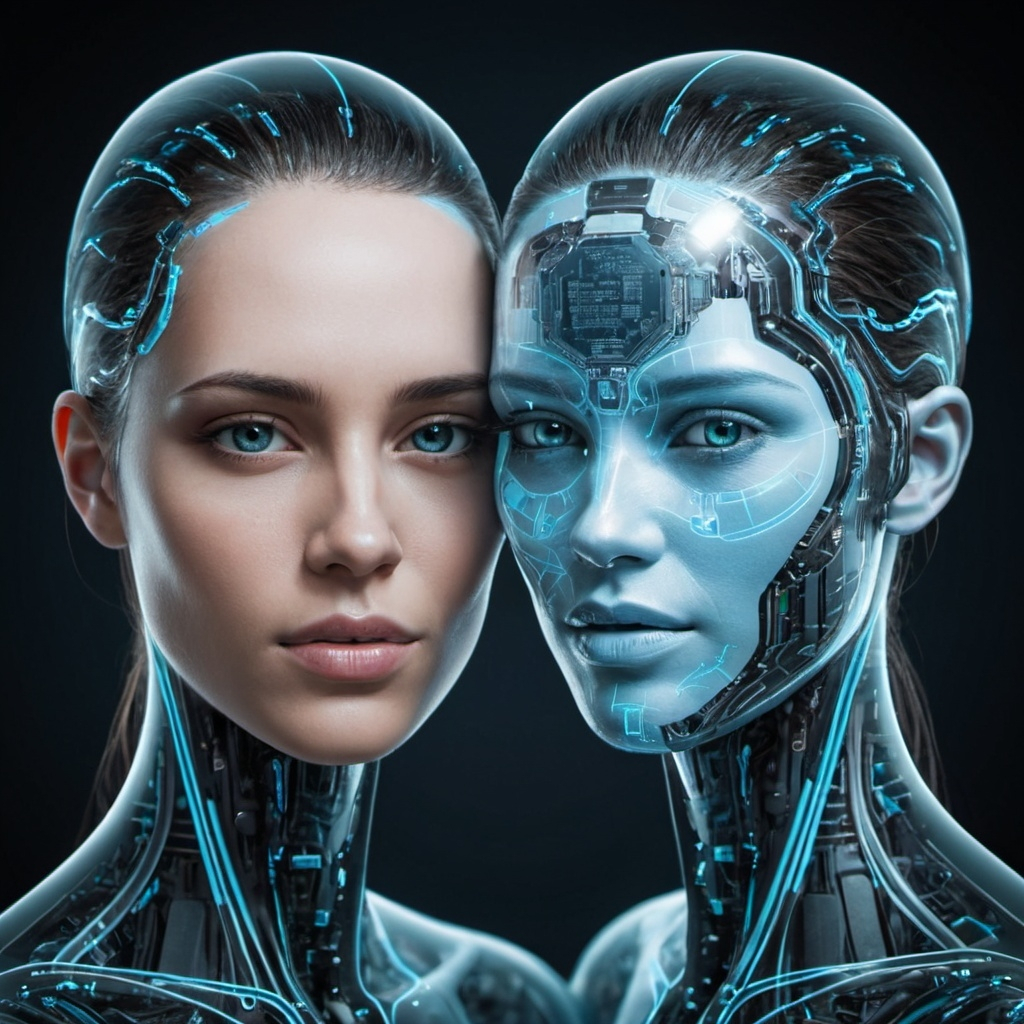Revolutionizing the Future of Digital Innovation
The concept of Digital Twins has emerged as a groundbreaking innovation that is transforming industries across the globe. At its core, a Digital Twin is a virtual replica of a physical object, system, or process, which allows organizations to simulate, analyze, and optimize their operations in real time. This technology, which once seemed like science fiction, is now a reality, with applications spanning from manufacturing and healthcare to smart cities and aerospace.
The rise of Digital Twins can be attributed to advancements in data analytics, artificial intelligence (AI), and the Internet of Things (IoT). These technologies have enabled the creation of highly accurate digital representations of physical entities, providing a powerful tool for decision-making and innovation. As organizations strive for greater efficiency and agility, Digital Twins offer a unique advantage by allowing them to anticipate problems, optimize performance, and enhance the customer experience.
One of the key benefits of Digital Twins is their ability to provide real-time insights. By continuously collecting and analyzing data from sensors embedded in physical objects, Digital Twins can simulate various scenarios and predict outcomes with remarkable accuracy. This capability is particularly valuable in industries such as manufacturing, where even minor disruptions can lead to significant losses. For instance, a Digital Twin of a production line can help identify potential bottlenecks before they occur, allowing operators to take proactive measures and minimize downtime.
Moreover, Digital Twins are playing a crucial role in the development of smart cities. By creating digital replicas of urban infrastructure, city planners can simulate the impact of new developments, optimize traffic flow, and improve energy efficiency. This holistic approach to urban planning is essential as cities around the world face the challenges of rapid urbanization and climate change.

CrossBeats Everest 2.0 Smart Watch for Men worth -70% ₹2,997
1.43″ True AMOLED, Always ON Display Bluetooth Calling Rugged Outdoor with Flash Light Upto 15 Days Battery Life Smartwatch 100+ Sports Mode (Black)
As the adoption of Digital Twins continues to grow, it is expected to drive significant advancements in various industries, unlocking new opportunities for innovation and efficiency. In this article, we will explore the intricacies of Digital Twins Technology, its applications, benefits, challenges, and the future it holds for different sectors.
The Intricacies of Digital Twins Technology
Understanding Digital Twins
Digital Twins are more than just digital representations; they are dynamic, evolving models that interact with their physical counterparts through real-time data exchange. This symbiotic relationship allows organizations to monitor the status, performance, and health of assets, systems, or processes remotely and in real time. The technology hinges on the seamless integration of data from IoT devices, AI algorithms, and advanced analytics, creating a comprehensive digital ecosystem.

A Digital Twin is typically composed of three main components:
- The Physical Entity: This is the actual object, system, or process in the real world that the Digital Twin represents. It could be anything from a machine on a factory floor to an entire city.
- The Digital Model: This is the virtual replica of the physical entity, built using data collected from sensors, CAD models, and other sources. The digital model can simulate the behavior and performance of the physical entity under various conditions.
- The Data Exchange: This is the continuous flow of data between the physical entity and its digital counterpart. Sensors and IoT devices collect real-time data from the physical entity, which is then processed and analyzed to update the Digital Twin.
The power of Digital Twins lies in their ability to mirror the real world with high fidelity. This allows organizations to conduct virtual experiments, optimize processes, and make informed decisions without disrupting actual operations.
Applications of Digital Twins Across Industries
The versatility of Digital Twins makes them applicable across a wide range of industries. Below are some key sectors where Digital Twins are making a significant impact:
- Manufacturing: In the manufacturing sector, Digital Twins are revolutionizing the way products are designed, produced, and maintained. By creating digital replicas of production lines, manufacturers can simulate different scenarios to identify potential issues and optimize processes. For example, General Electric (GE) uses Digital Twins to monitor the performance of its jet engines, enabling predictive maintenance and reducing downtime.
- Healthcare: Digital Twins are transforming healthcare by enabling personalized medicine and improving patient outcomes. For instance, a Digital Twin of a patient can be created using data from medical records, imaging, and wearables. This virtual model can be used to simulate the effects of different treatments, helping doctors choose the most effective approach.
- Smart Cities: As cities become more connected, Digital Twins are being used to optimize urban infrastructure. By creating digital replicas of buildings, roads, and utilities, city planners can simulate the impact of new developments, improve traffic management, and enhance energy efficiency. Singapore, for instance, has developed a Digital Twin of the entire city, which is used for urban planning and disaster management.
- Aerospace: The aerospace industry is leveraging Digital Twins to improve the design, production, and maintenance of aircraft. By creating digital replicas of aircraft components, manufacturers can simulate different flight conditions and optimize designs for performance and safety. Additionally, Digital Twins are used to monitor the health of aircraft in real time, enabling predictive maintenance and reducing the risk of in-flight failures.
- Energy: In the energy sector, Digital Twins are being used to optimize the performance of power plants, wind farms, and other infrastructure. By creating digital replicas of these assets, operators can monitor their performance in real time, predict equipment failures, and optimize maintenance schedules. For example, Siemens uses Digital Twins to optimize the performance of its gas turbines, resulting in significant cost savings.
- Automotive: The automotive industry is increasingly relying on Digital Twins to improve vehicle design, manufacturing, and maintenance. For instance, Digital Twins can simulate the performance of a new car model under various driving conditions, helping engineers optimize its design for safety, efficiency, and comfort. Additionally, Digital Twins are used to monitor the health of vehicles on the road, enabling predictive maintenance and reducing the risk of breakdowns.
Key Features and Benefits of Digital Twins
Digital Twins offer a plethora of features and benefits that make them invaluable in modern industries. Some of the most notable features include:
- Real-Time Monitoring: One of the most significant advantages of Digital Twins is their ability to provide real-time monitoring of physical assets. This allows organizations to track the status, performance, and health of their assets continuously, enabling timely interventions and reducing the risk of failures.

- Predictive Maintenance: Digital Twins can predict when a piece of equipment is likely to fail, based on real-time data and historical trends. This enables organizations to perform maintenance proactively, reducing downtime and extending the life of their assets.
- Scenario Simulation: Digital Twins allow organizations to simulate various scenarios and analyze the potential outcomes. This capability is particularly valuable in industries such as manufacturing and aerospace, where even minor changes can have significant impacts on performance and safety.
- Cost Optimization: By enabling predictive maintenance and scenario simulation, Digital Twins help organizations optimize their operations, reduce costs, and improve efficiency. For instance, by identifying potential issues before they occur, companies can avoid costly downtime and reduce the need for expensive repairs.
- Improved Decision-Making: Digital Twins provide organizations with valuable insights that can inform decision-making. By analyzing real-time data and simulating different scenarios, organizations can make more informed decisions, leading to better outcomes.
- Enhanced Customer Experience: By using Digital Twins to optimize operations and improve product quality, organizations can enhance the customer experience. For example, by predicting and addressing potential issues before they impact customers, companies can ensure a more reliable and satisfying experience.
Challenges in Implementing Digital Twins
While the benefits of Digital Twins are substantial, implementing this technology comes with its own set of challenges. Organizations must address these challenges to fully leverage the potential of Digital Twins:
- Data Integration: One of the biggest challenges in implementing Digital Twins is integrating data from various sources. Digital Twins rely on data from IoT devices, sensors, and other systems, which must be seamlessly integrated to create an accurate and comprehensive digital model. This requires robust data management and integration capabilities.
- Scalability: As the complexity and scale of operations increase, so does the complexity of Digital Twins. Organizations need to ensure that their Digital Twin solutions can scale effectively to handle large volumes of data and complex models. This requires scalable infrastructure and advanced analytics capabilities.
- Security and Privacy: Digital Twins involve the collection and analysis of large amounts of data, which can raise concerns about security and privacy. Organizations must implement robust security measures to protect sensitive data and ensure compliance with data privacy regulations.
- High Initial Costs: Implementing Digital Twins can require significant upfront investment in technology, infrastructure, and expertise. This can be a barrier for small and medium-sized enterprises (SMEs) that may not have the resources to invest in this technology.
- Complexity of Models: Creating accurate and reliable Digital Twins requires complex modeling and simulation capabilities. This can be challenging, particularly in industries where physical systems are highly complex, such as aerospace and healthcare.
- Skills Gap: The successful implementation of Digital Twins requires specialized skills in areas such as data science, AI, and IoT. Organizations may face challenges in finding and retaining talent with the necessary expertise to develop and maintain Digital Twins.
The Future of Digital Twins Technology
As the adoption of Digital Twins continues to grow, the technology is expected to drive significant advancements across various industries. Some key trends and developments that are likely to shape the future of Digital Twins include:
- Integration with AI and Machine Learning: The integration of AI and machine learning with Digital Twins is expected to enhance their capabilities further. AI can be used to analyze data from Digital Twins, identify patterns, and predict outcomes with greater accuracy. This will enable more advanced predictive maintenance, scenario simulation, and decision-making.
- Expansion into New Industries: While Digital Twins are already widely used in industries such as manufacturing, healthcare, and aerospace, the technology is expected to expand into new sectors. For example, in agriculture, Digital Twins could be used to monitor soil conditions, predict crop yields, and optimize farming practices. In retail, they could help manage supply chains, optimize inventory, and enhance customer experiences by simulating shopping behaviors and preferences.
- Enhanced Interoperability: As Digital Twins become more prevalent, the need for interoperability between different systems and platforms will grow. Future developments will likely focus on creating standardized protocols and frameworks that allow Digital Twins from different vendors and industries to communicate and work together seamlessly. This will enable organizations to create more comprehensive and integrated digital ecosystems.
- Integration with 5G and Edge Computing: The advent of 5G technology and edge computing will play a crucial role in the evolution of Digital Twins. With faster data transfer speeds and reduced latency, 5G will enable real-time updates and interactions between physical entities and their digital counterparts, even in remote or challenging environments. Edge computing will further enhance this capability by processing data closer to the source, reducing the need for centralized cloud computing and enabling more immediate responses.
- Increased Focus on Sustainability: As sustainability becomes a key priority for organizations worldwide, Digital Twins will play an essential role in achieving environmental goals. By simulating and optimizing energy usage, waste management, and resource allocation, Digital Twins can help organizations reduce their environmental footprint and operate more sustainably. This is particularly relevant in industries like construction, where Digital Twins can be used to design and manage buildings with minimal environmental impact.

- The Emergence of Cognitive Twins: The next frontier in Digital Twins technology could be the development of Cognitive Twins—an evolution of Digital Twins that not only replicate physical entities but also possess cognitive abilities, such as learning, reasoning, and decision-making. These Cognitive Twins would be able to adapt to new information and situations autonomously, offering even greater potential for innovation and optimization across industries.
- Greater Adoption in Smart Cities: As cities continue to evolve into smart, connected environments, the role of Digital Twins in urban planning and management will become even more critical. By creating dynamic, real-time models of entire cities, Digital Twins can help optimize traffic flow, manage utilities, monitor environmental conditions, and enhance public safety. This will be instrumental in addressing the challenges of rapid urbanization and climate change.
- Wider Use in Human-Centric Applications: Beyond industrial applications, Digital Twins will increasingly be used in human-centric scenarios. For instance, Digital Twins of individuals could be used to monitor health conditions, personalize medical treatments, or even simulate the effects of lifestyle changes. In the entertainment industry, Digital Twins could create immersive, personalized experiences for users, ranging from virtual reality simulations to personalized gaming environments.
Summary
Digital Twins Technology is revolutionizing how industries operate, offering unparalleled insights and efficiencies by creating dynamic, real-time digital replicas of physical entities. This technology, underpinned by advancements in IoT, AI, and data analytics, has already found applications in various sectors, including manufacturing, healthcare, smart cities, aerospace, and energy.
The key benefits of Digital Twins include real-time monitoring, predictive maintenance, scenario simulation, cost optimization, improved decision-making, and enhanced customer experiences. However, the implementation of Digital Twins comes with challenges, such as data integration, scalability, security, high initial costs, complexity of models, and a skills gap.
Looking ahead, the future of Digital Twins is bright, with significant advancements expected in AI integration, expansion into new industries, enhanced interoperability, and the rise of Cognitive Twins. The integration of 5G and edge computing, along with a focus on sustainability and smart cities, will further drive the adoption and evolution of Digital Twins.
As organizations continue to adopt and refine Digital Twins, the technology is poised to unlock new levels of innovation, efficiency, and sustainability across industries, fundamentally changing how we design, build, and interact with the world around us. The potential of Digital Twins is vast, and as it becomes more ingrained in both industrial and human-centric applications, it will undoubtedly play a central role in shaping the future of digital innovation.
In conclusion, Digital Twins Technology represents a transformative approach to understanding and optimizing the physical world through its digital counterpart. As industries continue to embrace this technology, it will drive significant advancements, paving the way for smarter, more efficient, and more sustainable operations across the globe. The future of Digital Twins is not just about replicating the physical world but about enhancing our ability to innovate and improve it.
Cool articles to whet your reading appetite





Real Estate Good post! We will be linking to this particularly great post on our site. Keep up the great writing